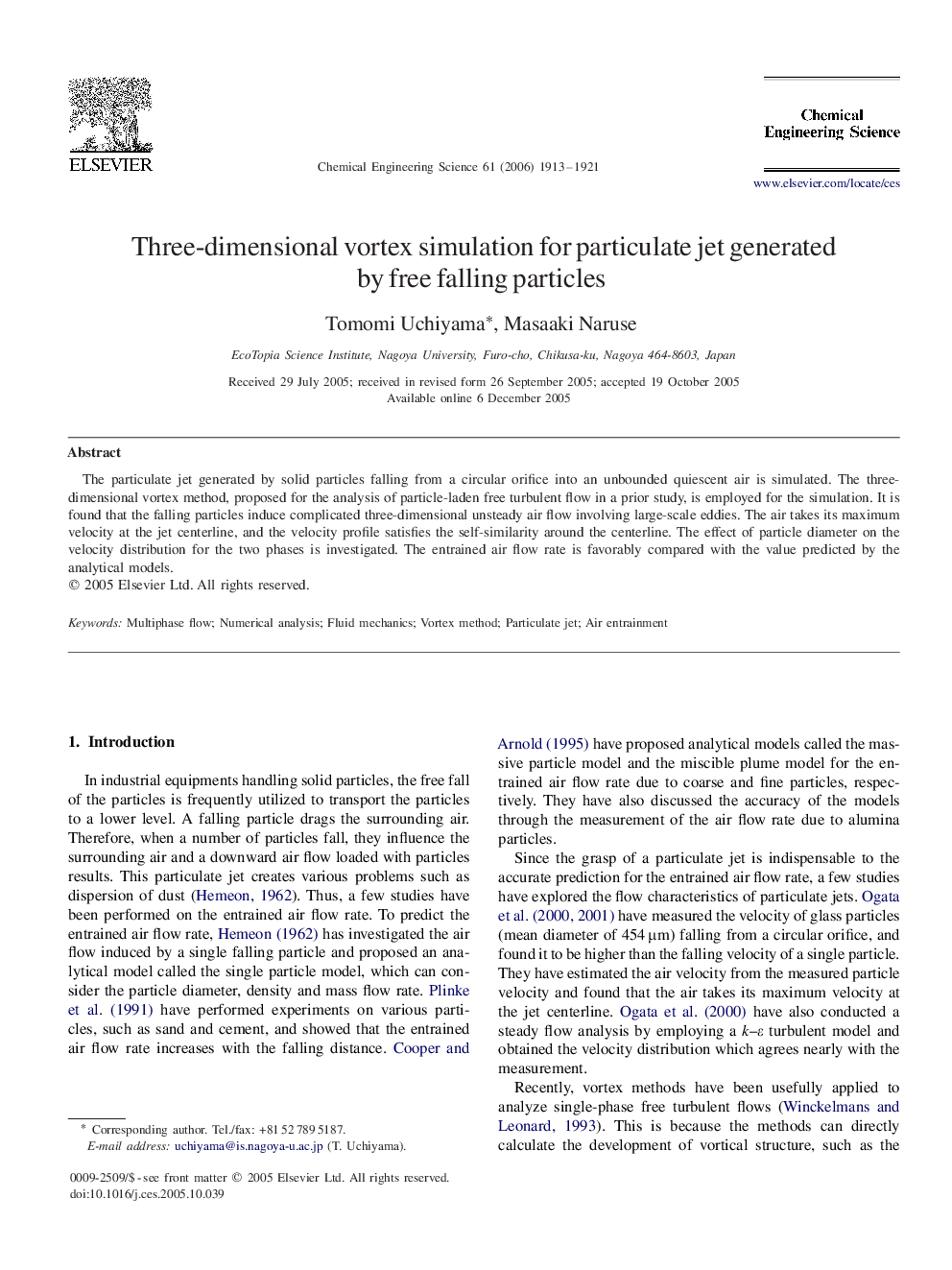| Article ID | Journal | Published Year | Pages | File Type |
|---|---|---|---|---|
| 160925 | Chemical Engineering Science | 2006 | 9 Pages |
Abstract
The particulate jet generated by solid particles falling from a circular orifice into an unbounded quiescent air is simulated. The three-dimensional vortex method, proposed for the analysis of particle-laden free turbulent flow in a prior study, is employed for the simulation. It is found that the falling particles induce complicated three-dimensional unsteady air flow involving large-scale eddies. The air takes its maximum velocity at the jet centerline, and the velocity profile satisfies the self-similarity around the centerline. The effect of particle diameter on the velocity distribution for the two phases is investigated. The entrained air flow rate is favorably compared with the value predicted by the analytical models.
Related Topics
Physical Sciences and Engineering
Chemical Engineering
Chemical Engineering (General)
Authors
Tomomi Uchiyama, Masaaki Naruse,
